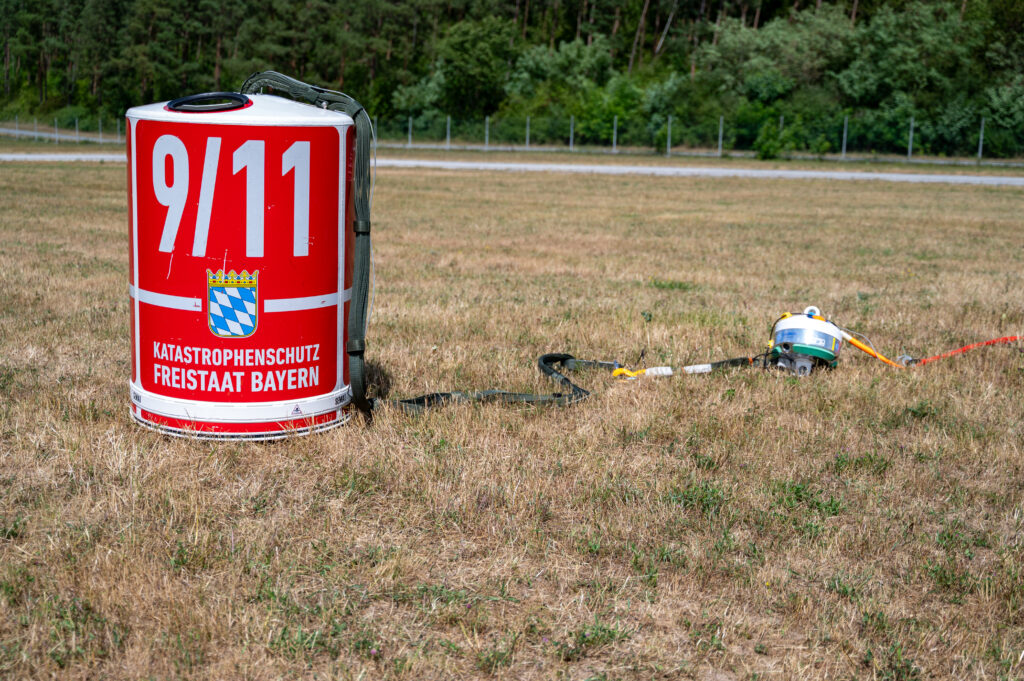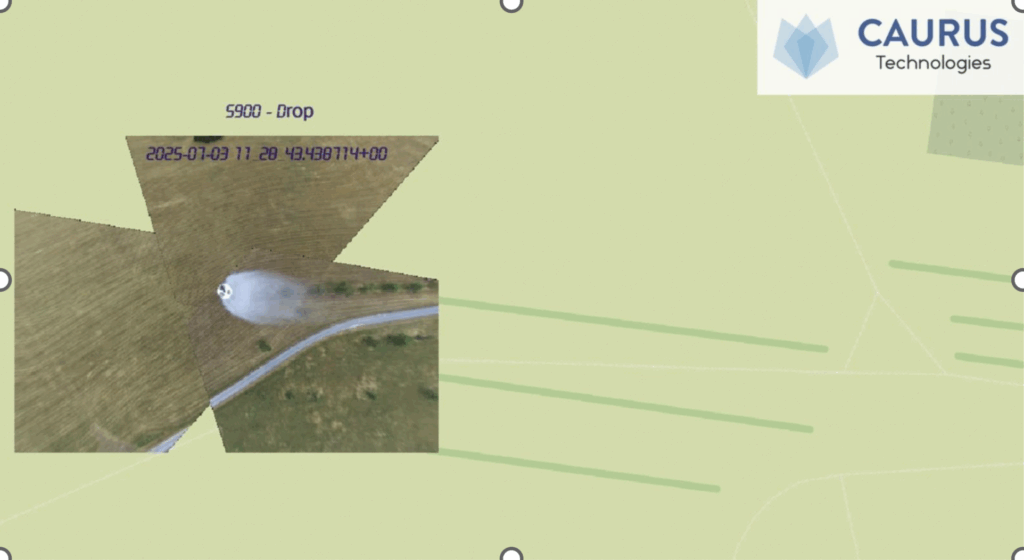
July 2025 Würzburg – As part of the “Flying Days” training event for ground forces assisting a.o. in aerial forest firefighting, CAURUS Technologies Managing Director Philippe Telle officially handed over the first CAURUS Sensor demonstrator to Andreas Lenz, course leader and head of vocational training, on behalf of the State Firefighter Academy Würzburg. This means that the first CAURUS Sensor for external loads is now ready for its crucial test, i.e. the initial application during a forest fire.
"Over the past 18 months, we have built, tested, and further developed the sensor as a demonstrator based on extensive input, requests, and feedback from Bavarian fire departments. We are delighted to be able to officially hand over the first CAURUS Sensor to the Würzburg Fire Department today,“ says Telle, who sees this as the starting signal for the development of a series of sensors.
"We are pleased to have the sensor with which we can complement our situational awareness from the air during external load missions with digital monitoring and measuring of the water drop. The next step is to transfer the CAURUS Sensor from training to real environment use, because in times of increasingly severe forest fires and more frequent droughts, it is important to use data-based technology to deploy firefighting water in a targeted and efficient manner." Andreas Lenz
The sensor in use
As was the case last year during the ground force training for flight missions, the sensor flew on the helicopter during aerial firefighting training sessions. Since its first test flight in 2024, images and data have been collected during various flights to develop the software and evaluation procedures in their current form.The sensor platform comprises various HD cameras, an IR camera, additional sensors, computers, and software. During the test flights, the cameras recorded the several maneuvers of the helicopter and its water load above the ground, such as filling the water containers with a hose and from open water and dropping the water from so-called “Bambi” buckets or SEMAT containers. This requires the helicopter crews to maneuver with precision above the ground.


In the future, AI-based software will use the recordings and data to develop map views and parameters that allow the incident commander or pilots to see what the water is doing below the helicopter. In addition, this data can be used to digitally determine, i.e., measure, the effect of the water on the fire. This information in turn allows fire departments to make decisions about optimizing the deployment of helicopter fleets and the amount of water required, and to select the drop tactics best suited to the type of fire. This also allows ground forces to approach the fire with greater safety and finally extinguish it.
Sensor functionality and robustness have been intensively tested over the past 12 months in collaboration with partners on helicopters in training missions, including forest firefighting exercises.
The risk of forest fires is increasing in Germany and internationally due to climate change. In order to be able to act quickly even in hard-to-reach places, there is a growing demand for air support for personnel, equipment, and water supply operations.